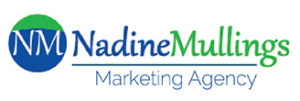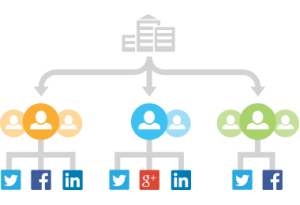As mentioned in 8 Tips for Creating a “Social Business” (Part 1), having a “Social Business” is different than just being on a “Social Network”. In order to be “social” on a social network, you must have a “social business”.
In this blog post, I will share tips 5-8 for creating a social business. The inspiration and original content for this post is provided by Evan LePage. Originally posted on HootSource.
Tip 5- Collaborate
Be sure to encourage your team members to distribute new learning both within the team and your organization as a whole. Keep an ongoing loop of discovery and dissemination where best practices, positive messaging or common questions are put forward for comment or collaboration. Social platforms like Yammer and Hootsuite Conversations are exceptional tools for supporting secure internal conversation and exchange of ideas.
Ultimately better internal collaboration supports improved external engagement, keeping messaging consistent, intelligent and brand-appropriate.
Tip 6- Secure
Fear over losing control is an understandable barrier to implementing social media across an organization. It is important to note that mistakes are preventable. In many popular cases the missteps were handled well and the damage to each organization was more along the lines of temporary embarrassment than anything permanent, but why not stop them before they occur?
Hootsuite developed Secure Profiles specifically in response to instances like these to put a solid measure of prevention in place. This provides an extra prompt when publishing to important branded accounts, preventing errant posts intended for personal accounts.
Limited Permissions is another unique security feature. Hootsuite offers multiple levels of account access and places limits on which team members can participate in outbound social conversation directly. The Limited Permissions puts control over publishing firmly in the hands of those who are most trusted. Your social tools should too.
Tip 7- Measure ROI
Tie social to the big picture by linking it to organizational and departmental goals. Users can start with tracking the Like, @mention, Retweet or Follow, but tap in to the power to go much further and deeper. Build the capacity for measurement into every social action. Use URL shorteners, like Hootsuite’s ow.ly links, to track your click-throughs. Integrate Google Analytics and Facebook Insights to track on-site conversions or drill in to geographic disparities in data.
One of the more powerful, recent integrations at Hootsuite is the partnership with Adobe SiteCatalyst. For the first time ever, you’re able to track the path from social message to conversion and attach a dollar value to individual social messages against Key Performance Indicators. You’re able to see which social platform performs best against certain kinds of messaging, analyze which of your Social Advocates is driving more revenue per message and understand what times of day work best for which kinds of communication.
Reporting is important. With Hootsuite you can use data gained from Adobe SiteCatalyst, Webtrends, Facebook Insights, Google Analytics, Google+ Pages Analytics, Twitter Profile Stats, Hootsuite’s custom ow.ly Click Stats to generate easy, drag and drop social analytics reports shared easily by email. More importantly, you can analyze that data to optimize future programs and messaging.
Tip 8- Amplify
When you have a piece of content that is a “hit,” double down. One of the benefits of good measurement and understanding of your data is the ability to hone your messaging and understand what did and didn’t work from a content perspective. Organic social is testing your content for you. Paid social allows you to commit dollars with data-backed belief in your programs and messaging. Invest in promoted tweets, accounts or trends across social platforms or accounts that have already demonstrated the highest yield.
With paid social companies can drill down to microtarget users – either their own followers or people “like” their followers – based on literally hundreds of different interests, by country and city, gender and even device. Companies only pay when users “engage” with the Promoted Tweet in some way, i.e. by clicking on a link or retweeting it. Native ads are also very agile. Members of an organization can log in at any time, create a message and instantly push it to a global audience as a Promoted Tweet. An eBay-style bidding system means prime ad spots always go for the lowest price, minimizing ad spend. The time-consuming (not to mention pricey) requirements of traditional ad campaigns – design teams, creative agencies and media buyers – can’t make the same claim.
Summary:
Social is here to stay and to maintain a competitive advantage, businesses need to stay abreast of this ever-evolving space. Hootsuite Pro helps teams engage with audiences and analyze campaigns across multiple social networks like Twitter, Facebook and LinkedIn from one secure web-based dashboard.

